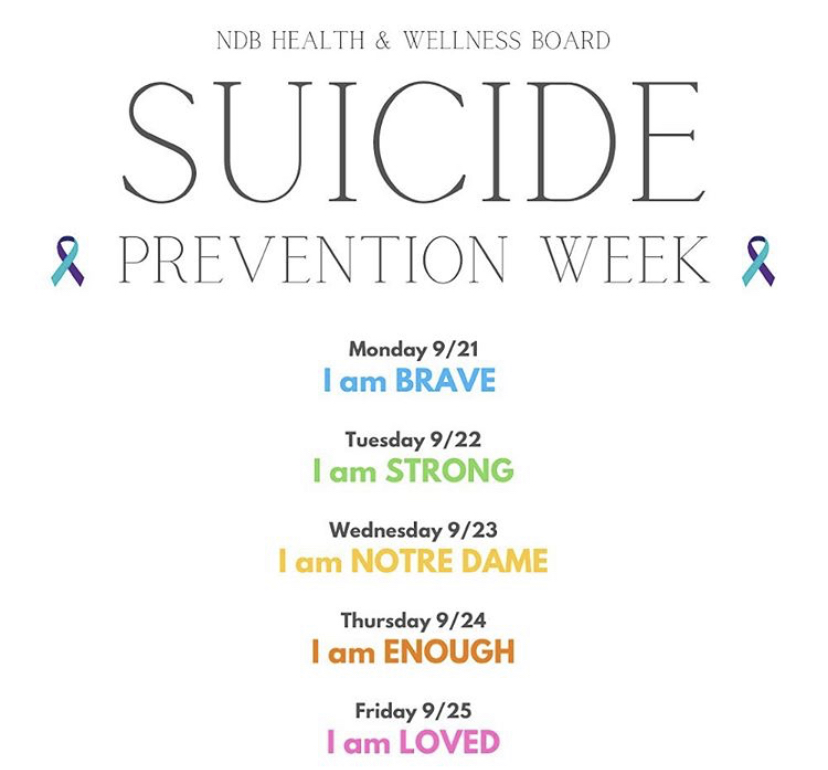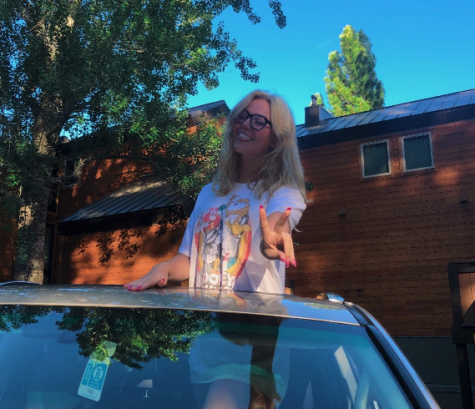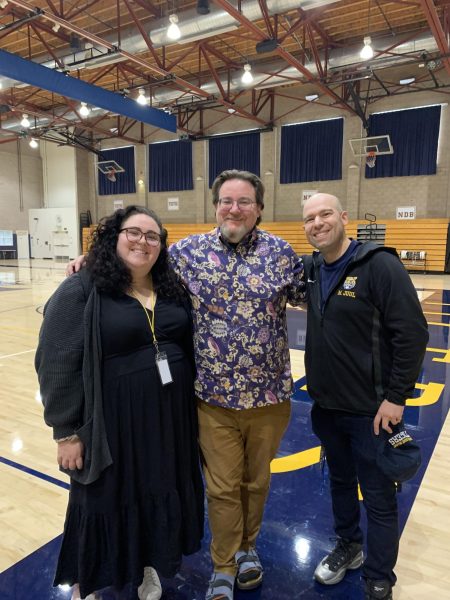Opinion: The S-word
The Catalyst / Photo via @ndbtigers on Instagram
The NDB Health & Wellness Board created an initiative around Suicide Prevention Week to minimize the stigma around talking about suicide.
My first memory of Suicide Prevention Month at NDB was, during my sophomore year, when National Suicide Prevention Week was renamed #WeCareWeek. As someone who is passionate about mental health and suicide prevention awareness, I remember wondering why the school had chosen to call it that. Later, I found out during my junior year after I joined the Health & Wellness Board that some faculty members made sure the word was not used.
The school’s logic behind it was that, by mentioning suicide, it will cause it to cross our minds, and by not talking about it, then we will not think about it. This baffled me because I had known what suicide was by age nine, and especially at an older age now, I have realized teenagers know what suicide is, no matter how it is presented to them. Talking about suicide does not in any way romanticize it, rather it helps prevent it.
The Nevada Division of Public and Behavioral Health Office of Suicide Prevention states, “Talking about suicide provides the opportunity for communication. Fears shared are more likely to diminish. The first step in encouraging a person with thoughts of suicide to live comes from talking about those feelings.”
By keeping all conversations about suicide behind the scenes, it makes it harder for students to understand that it is okay to not be okay. This is an important realization to come to since receiving help is necessary when dealing with suicidal thoughts, but a hard consensus to come to when the topic is hushed upon.
This year, the school did not participate in National Suicide Prevention Week from September 6 to 12. I was disappointed, to say the least. National Suicide Prevention week has been around for 22 years, and every other year I have attended NDB, it has been acknowledged. I thought that the progress, small but existent, from the last two years, would have led to a more successful attempt at battling the “s-word.” Thankfully, the Health & Wellness board had a chance to host a prevention week at the end of the month, but there were still limitations with some ideas being challenged.
NDB creating a team on the American Foundation for Suicide Prevention website where donations could be given was a good first step, but there is so much more work to be done around breaking the stigma against mental health and suicide prevention. We, as a school, should not be waiting until we have to talk about it. It is a responsibility as leaders in a school to talk about it before it gets to that point. It should not be a waiting game and it definitely should not take a successful attempt to finally bring attention to it.
Lack of acknowledgment sends the message of fear, discomfort, and negativity, all furthering the stigma that plagues mental health and the taboo topic of suicide. Fear builds the stigma around mental health and suicide prevention, and fuels it in a way that only makes it grow stronger.
Kate Williams, a mental health professional in the Belmont-Redwood Shores School District believes talking about suicide in schools is good. “I think the harm that has been created is that we aren’t talking about it,” she said. “Now that it has become a more open subject, hopefully, within time, the data will show that suicides go down when conversations are had.”
Staying silent during this time will only further the hardships students are already facing, and deepen the stigma around asking for help when we most need it. Not being able to have unshameful conversations about suicide will make those who are suffering, feel even more isolated. Suicide should not be a word that schools shy away from. It is a very real thing with very real consequences, and not something that should ever be silenced.











